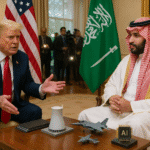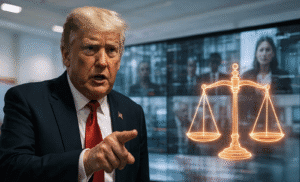Global economic growth is forecasted to slow in 2025, with offshore investors reducing capital sent to emerging markets by nearly 25%, according to a report released on Wednesday by the Institute of International Finance (IIF). The report attributes this shift to the anticipated policies of incoming U.S. President Donald Trump, which are already rippling through global markets.
Key factors influencing this trend include threatened U.S. tariffs, a stronger dollar, and slower-than-expected interest rate cuts by the Federal Reserve. These elements have created a more challenging environment for capital flows, discouraging investor appetite for risk assets, the IIF stated in its semi-annual report.
China Faces the Brunt of the Impact
China, traditionally a magnet for foreign investment, is facing significant outflows. In 2024, the country experienced its first foreign direct investment outflow in decades. This trend is expected to worsen in 2025, with total portfolio flows projected to turn negative, resulting in an outflow of $25 billion.
“This divergence highlights the continued resilience of non-China emerging markets (EMs), supported by improving risk sentiment, structural shifts like supply chain diversification, and strong demand for local currency debt,” the IIF noted.
Emerging markets outside China are expected to fare better, with robust inflows into bonds and equities, particularly in resource-rich economies in the Middle East and Africa.
Slower Global and Emerging Market Growth
The IIF projects global growth will moderate to 2.7% in 2025, down from 2.9% in 2024. Emerging markets are forecasted to grow by 3.8%, driven by resilient economies outside China. However, capital flows to emerging markets are expected to decline from $944 billion this year to $716 billion in 2025, primarily due to weaker inflows to China.
Tariffs Loom Over Global Markets
The IIF cautioned that its projections are based on selective tariff implementation. If President Trump follows through with his threatened tariffs—60% on China and 10% on the rest of the world—the outlook could deteriorate further.
“A stronger and swifter implementation of tariffs by the United States could exacerbate downside risks, amplifying disruptions to global trade and supply chains, placing additional strain on EM capital flows,” the report warned.
Outlook for Non-China Emerging Markets
Despite the challenges, emerging markets outside China remain a bright spot. The report highlights structural shifts such as supply chain diversification and strong demand for local currency debt as supportive factors for these economies.
While the global economic landscape faces heightened uncertainty, resource-rich regions like the Middle East and Africa are poised to attract steady investment, bolstering their economic resilience amidst shifting global dynamics.














